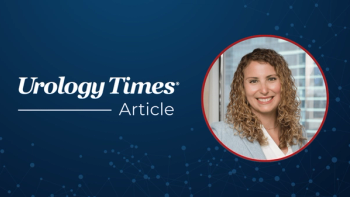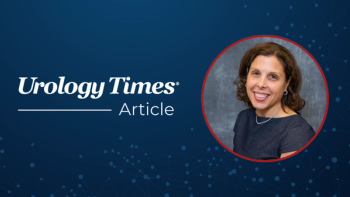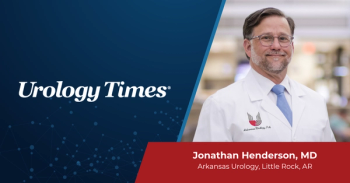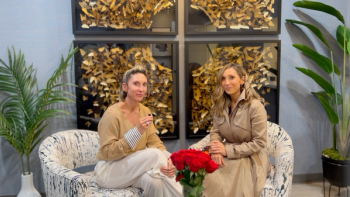
Coaching program aims to alleviate female physician burnout
Cofounders Adrienne Mann, MD, and Tyra Fainstad, MD, discuss Better Together, a professional, structured coaching program designed to address the burnout experienced by women in medicine.
In a recent interview, cofounders Adrienne Mann, MD, and Tyra Fainstad, MD, discussed Better Together, a professional, structured coaching program designed by female physicians to address the burnout that is disproportionately experienced by women in medicine.
Can you describe the Better Together program?
Mann: Better Together is a six-month online group coaching program that was designed for women residents. It was delivered to women residents at the University of Colorado in 2021. In our program, participants get invited to a members-only website, where they can engage with us in three different ways. We have weekly content over six months that covers a whole bunch of stuff, starting from vision and values, setting big goals, to dealing with perfectionism, impostor syndrome and envisioning your future self. We have weekly modules that people can work through on their own. They can also (be) coached by Tyra and I, or live on a Zoom call, where we host two calls a week. They can raise their hand and come up and say, “Hey, I would like coaching today on some bad feedback I got in the operating room,” and we’ll go back and forth with them on a Zoom call in front of a group of their peers, and then send them back when they’re done. We usually coach about four people per call. They can also engage in coaching on our website in a written way. They write to us, we respond, and it gets posted on a forum on the website for all the participants to read and benefit from. Throughout all this, our objective is to help show people what’s going on in their mind and get them curious about their thinking.
What makes today’s physician culture so toxic?
Fainstad: Physician culture rests on this idea that a physician is a hero. With that comes an idea of pure altruism, which unfortunately has gotten translated into putting yourself last. It even creeps into martyrdom a little bit.
Mann: This is a pattern I’ve seen get worse over my career. It’s been brought to light with recent events, especially the pandemic. People are starting to talk more about the toxic culture. Unfortunately, instead of talking about the culture itself, what ends up happening is this battle between the system and the individual, which leaves room for someone to be at fault and someone to blame. You’ve got the system on one side, blaming the individual employees or health care providers, saying, “Here, try a free yoga session. Are you happy now?” You can get physicians as resilient as possible, and there is still going to be this awful culture (and) this mindset of perfectionism.
Why does burnout disproportionately affect women?
Fainstad: There are issues women deal with disproportionately in the workplace — outright sexism, macroaggressions and daily microaggressions. It’s creating this huge cognitive load to have to deal with the additional stress of not being taken seriously or constantly being asked what your age is. I get asked all the time, “Who’s taking care of your kids?” by my patients. Certainly, people (who) are underrepresented in medicine deal with that to a magnificently bigger degree. Adding to this is the fact that people who are socialized as women are often the ones (who) are the default caregiver outside of work. There isn’t a place for rest or to let your guard down. The pandemic brought that to a head, also. When kids couldn’t go to school anymore, data (have) shown the work fell disproportionately onto those (who) identify as women at home.
The demographics of this study were primarily White, cis-gendered women. Would you consider introducing this program to communities of color or nonbinary individuals?
Mann: Those demographics are representative of the population we have here at the University of Colorado. We plan to expand this program in the fall of this year to 27 sites across the country, with a focus to serve many other populations.
Fainstad: We’re hoping to get an adequate representation of all the people we’re serving — so all the trainees in medicine — and then find out (whether) there is a difference in those (who) are underrepresented. Do people of color get more out of this? Do nonbinary people get more out of coaching? Then also having the representation amongst coaches. We are still in the early planning stages of all that, but that’s a goal of this program.
Was there a specific moment when you decided this program needed to happen?
Mann: For me, it was when I hired my first coach. I have experienced three waves of burnout over the course of my medical training. One little blip in medical school, one blip in residency, then another blip, (which was the most severe) when I was early faculty. I had just had my second kid and was trying to figure out how to come back to work in several leadership roles and just really struggled to find my feet, and I hired a coach to help me get some perspective.
Fainstad: My story is the same. Adrienne and I sort of had these parallel experiences, which are not that rare. Medical training attracts people like us — people who get validation from the outside. I now identify as a reformed approval addict, but that’s sort of how I went through medical training. I was just doing the next best thing that other people told me to do. I didn’t stop to come up for air until I hit rock bottom.
What do you think led to the success of this program?
Fainstad: At the base of it, physicians and physicians in training are just not OK right now. The data show many of us are burned out, many of us are barely keeping our heads above water. We, of course, didn’t plan the pandemic to coincide with the release of Better Together, but it really was right there when the residents needed it. It was easy to get into it in a socially distanced way. It addressed at the core, the reasons why we’re not OK. The reason we’re not OK is because we haven’t learned how to manage our feelings and our minds. [Participants] see Adrienne and I as medical educators they know and respect. We talk about this journey we’ve been through, and I think it’s accessible to them in a way that perhaps other mental health modalities are not. Coaching is not stigmatized in the way other mental health resources are.
Mann: The tools we teach them are practical. They can apply these metacognitive tools immediately and see the traps they get themselves stuck in, in their thinking. The other thing that was powerful about our intervention was that they were not doing this alone. They’re able to see (they’re) not the only one who shows up to work, thinking people are going to find out (they) don’t know everything. We also offer three different ways for folks to engage. These are busy women, (and) their days are long. We’re able to offer a bunch of different ways to participate meaningfully in the program.
Newsletter
Stay current with the latest urology news and practice-changing insights — sign up now for the essential updates every urologist needs.


















